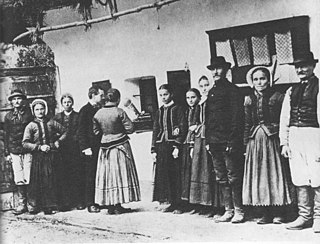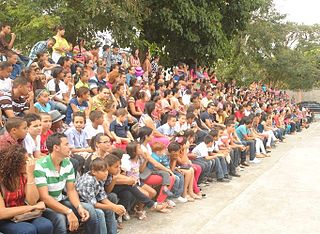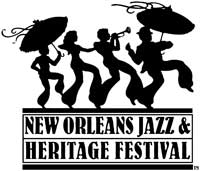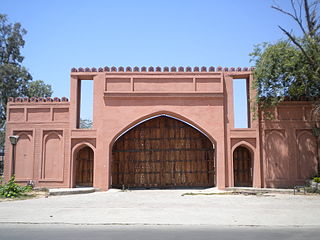
Folk music is a music genre that includes traditional folk music and the contemporary genre that evolved from the former during the 20th-century folk revival. Some types of folk music may be called world music. Traditional folk music has been defined in several ways: as music transmitted orally, music with unknown composers, music that is played on traditional instruments, music about cultural or national identity, music that changes between generations, music associated with a people's folklore, or music performed by custom over a long period of time. It has been contrasted with commercial and classical styles. The term originated in the 19th century, but folk music extends beyond that.

A singer-songwriter is a musician who writes, composes, and performs their own musical material, including lyrics and melodies. In the United States, the category is built on the folk-acoustic tradition with a guitar, although this role has transmuted through different eras of popular music. Singer-songwriters often provide the sole musical accompaniment to an entire song. The piano is also an instrument of choice.

The culture of the Dominican Republic is a diverse mixture of different influences from around the world. The Dominican people and their customs have origins consisting predominantly in a European cultural basis, with native Taíno and African influences.

Northwest Folklife is an independent 501(c)(3) arts organization that celebrates the multigenerational arts, cultures, and traditions of a global Pacific Northwest.

The New Orleans Jazz & Heritage Festival is an annual celebration of local music and culture held at the Fair Grounds Race Course in New Orleans, Louisiana. Jazz Fest attracts thousands of visitors to New Orleans each year. The New Orleans Jazz & Heritage Festival and Foundation Inc., as it is officially named, was established in 1970 as a 501(c)(3) nonprofit organization (NPO). The Foundation is the original organizer of the New Orleans Jazz & Heritage Festival presented by Shell Oil Company, a corporate financial sponsor. The Foundation was established primarily to redistribute the funds generated by Jazz Fest into the local community. As an NPO, their mission further states that the Foundation "promotes, preserves, perpetuates and encourages the music, culture and heritage of communities in Louisiana through festivals, programs and other cultural, educational, civic and economic activities". The founders of the organization included pianist and promoter George Wein, producer Quint Davis and the late Allison Miner.

The National Nordic Museum is a museum in the Ballard neighborhood of Seattle, Washington, United States, dedicated to the Nordic history, art, culture, and the heritage of the area's Nordic immigrants. It was founded in 1980 as the Nordic Heritage Museum, moved into a permanent, purpose-built facility in 2018 named the Nordic Museum, and was designated as the National Nordic Museum in 2019. The museum serves as a community gathering place and shares Nordic culture by exhibiting art and objects, preserving collections, and providing educational and cultural experiences from Danish, Finnish, Icelandic, Norwegian and Swedish Americans. The geographical region covered by the Museum includes entire Nordic region.

Festál is a free series of annual ethnically-related festivals that take place on the grounds of Seattle Center in Seattle, Washington. A major cultural program of Seattle, these festivals aim to celebrate and connect the city to its varied ethnic and international community. Most festivals contain various arts performances, dances, marketplace and other programs. These have also come to be the annual gathering place for ethnic groups of the community. Both older and younger people attend, especially the dances and musical concerts.

Folk art covers all forms of visual art made in the context of folk culture. Definitions vary, but generally the objects have practical utility of some kind, rather than being exclusively decorative. The makers of folk art are typically trained within a popular tradition, rather than in the fine art tradition of the culture. There is often overlap, or contested ground with 'naive art'. "Folk art" is not used in regard to traditional societies where ethnographic art continue to be made.
Táncház is a "casual" Hungarian folk dance event. It is an aspect of the Hungarian roots revival of traditional culture which began in the early 1970s, and remains an active part of the national culture across the country, especially in cities like Budapest. Táncház draws on traditions from across the regions of the Kingdom of Hungary, especially music and dance. The term is derived from a Transylvanian tradition of holding dances at individuals' homes.
The National Folk Festival (NFF) is a longstanding, Australian family friendly celebration of all aspects of folk music and culture. It is held every year at Easter in the national capital, Canberra.

The Clearwater Festival is a music and environmental summer festival and America's oldest and largest annual festival of its kind. This unique event has hosted over 15,000 people on a weekend in June for more than three decades. All proceeds benefit Hudson River Sloop Clearwater, Inc., a 501(c)(3) nonprofit environmental organization.

The Pittsburgh Folk Festival is a large multicultural celebration of diverse international ethnic heritages, which has been held in Pittsburgh, Pennsylvania since 1956.
Cultural retention is the act of retaining the culture of a specific ethnic group of people, especially when there is reason to believe that the culture, through inaction, may be lost. Many African-American, European and Asian organizations have cultural retention programs in place.

Heritage Museum, also known as Lok Virsa Museum, is a museum administered and managed by Lok Virsa - National Institute of Folk & Traditional Heritage.
Applefest is a yearly village-wide food, entertainment and crafts fair, taking place in several towns in Canada, the United States and England.

Rutgers Day is a festival held on the last Saturday in April every year at Rutgers University. It typically brings in tens of thousands of festival-goers onto Rutgers campus. Open to the general public, it offers approximately 500 free programs that feature demonstrations, child-friendly interactive activities involving animals and plants, student performances, cultural traditions, exhibits, food vendors, football scrimmage, and live music. Free shuttle buses run between sites during the day.
The Center for Traditional Music and Dance (CTMD) is a leading folk/traditional arts organization based in New York City. Originally established as the Balkan Arts Center in 1968, CTMD assists the city's ethnic and immigrant communities in maintaining their traditions and cultural heritage. CTMD has developed a range of programs that emphasize research, documentation, collaboration, presentation, and education to help advance its mission of cultural equity. Over the past five decades, CTMD’s programs have led to the creation of nationally renowned ensembles, folk arts festivals, and community-based cultural organizations. CTMD provides the public with a full calendar of events designed to showcase and promote the diversity of New York City's performing arts traditions.
The Polish American Family Festival and Country Fair is a celebration of Polish American unity and pride that is among the largest and oldest festivals of its kind in the United States.

The Hornbill Festival is an annual festival celebrated from 1 to 10 of December in the Northeastern Indian state of Nagaland. The festival represents all ethnic groups of Nagaland for which it is also called the Festival of Festivals.
Folk festivals are an important part of American community life. For the American people, popular folk festivals are important events composed of complex folklore phenomena. Folk festivals are generally used to celebrate folk music and traditional folk crafts, and some folk festivals are embodied in the form of dance and art. Some festivals are used to celebrate the harvest of crops or to gather people to watch performances and enjoy music, dance and folk culture on a specific day. These folk festivals can be categorized into music, dance, traditional culture and art as well as traditional crafts. Some folk festivals have a long history and they have been passed down from generation to generation. Even the folk festivals that have been recognized by people in recent years have received attention. There are hundreds of folk festivals in American waiting to be celebrated, and each festival has its own characteristics and style. As an inclusive country that incorporates a diverse culture, folk festivals are important events for the American people. More music festivals exist in American whether it is outdoors or indoors, the festival attracts a large number of visitors and tourists. This behavior not only promotes the economic development of every city in American, but also makes folk festivals more and more popular. In the American folk festivals, there are also some folk festivals for charity. These festivals will be held in the form of music festivals or festivals, and all the money received through the event will be used to finance poor children or for medical purposes. At the same time, some folk festivals that celebrate the harvest are also used as charity events. Crops and fruits obtained by farmers through labor are made into food or sold directly to tourists in exchange for money. These funds acquired on folk festivals are also used for charity. Folk festivals are not only a way for Americans to relax from their busy work, but also a symbol of history and culture.














